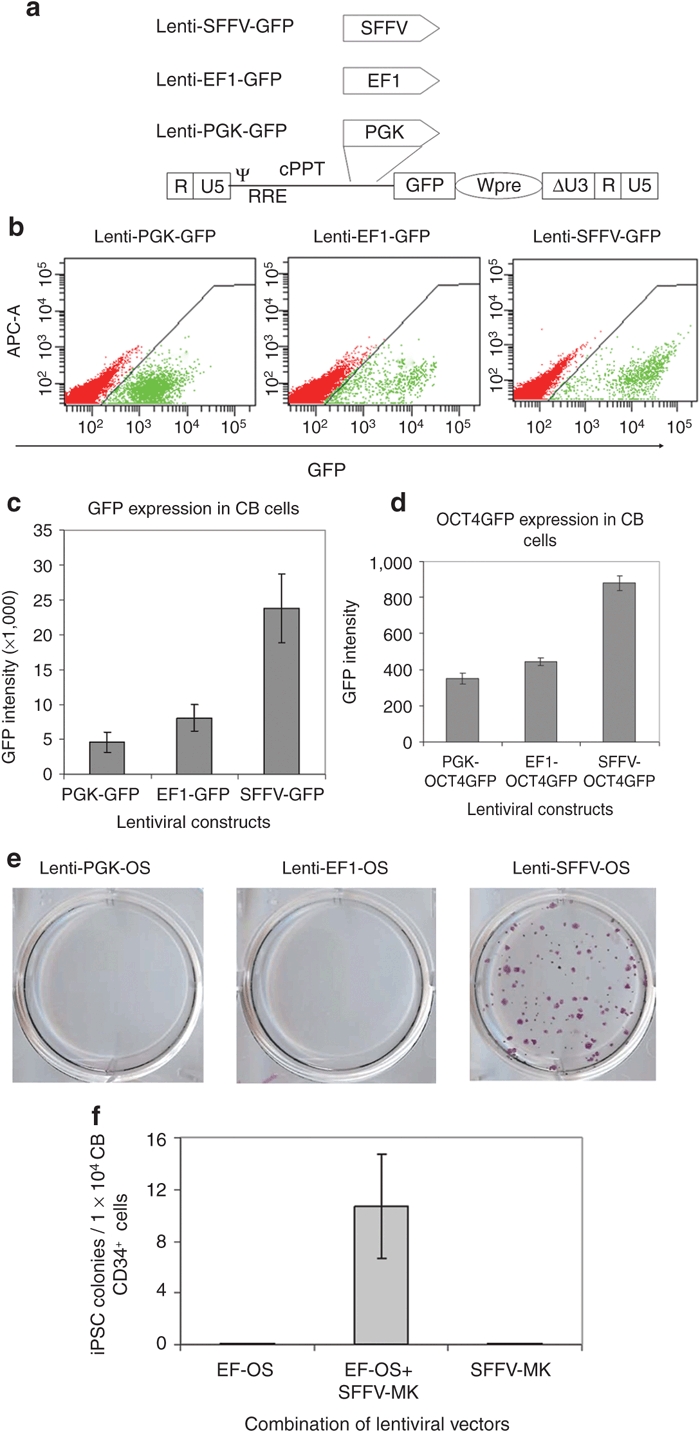Figure 2.

Efficiency of OCT4 and SOX2-mediated reprogramming depends on gene expression levels. (a) Schematic of the self-inactivating (SIN) lentiviral vector backbones for expression of green fluorescent protein (GFP). Δ indicates the SIN design with partially deleted U3 of the 3′ long-terminal repeat. cPPT, central polypurine tract; EF1, elongation factor-1α promoter; PGK, phosphoglycerokinase promoter; RRE, rev-responsive element; SFFV, spleen focus-forming virus U3 promoter; Wpre, post-transcriptional regulatory element; ψ, packaging signal. (b) Representative levels of GFP expression driven by three different promoters in cord blood (CB) CD34+ cells. Fluorescence-activated cell sorting (FACS) analysis was conducted at 3 days post-transduction. (c) Distinct GFP expression levels driven by three different promoters in CB CD34+ cells. n = 3. PGK-GFP vs. EF-GFP: P = 0.05; EF-GFP vs. SFFV-GFP: P < 0.05. (d) Increased expression of OCT4GFP fusion gene driven by SFFV promoter compared to PGK and EF1 in CB CD34+ cells. FACS analysis was conducted at 3 days post-transduction. n = 3. PGK-OCT4GFP vs. EF1-OCT4GFP: P = 0.06; EF1-OCT4GFP vs. SFFV-OCT4GFP: P < 0.01. (e) Alkaline phosphatase (ALP) staining for iPSC cultures from CB cells transduced with PGK-OS, EF1-OS, and SFFV-OS. Note that no colonies were generated in PGK-OS, EF1-OS conditions. (f) Expression of MYC and KLF4 rescues failure of low level OS expression driven by EF1 promoter in generating induced pluripotent stem cells (iPSCs) from CB CD34+ cells. Graphed data are presented as mean ± SEM (n = 3).
